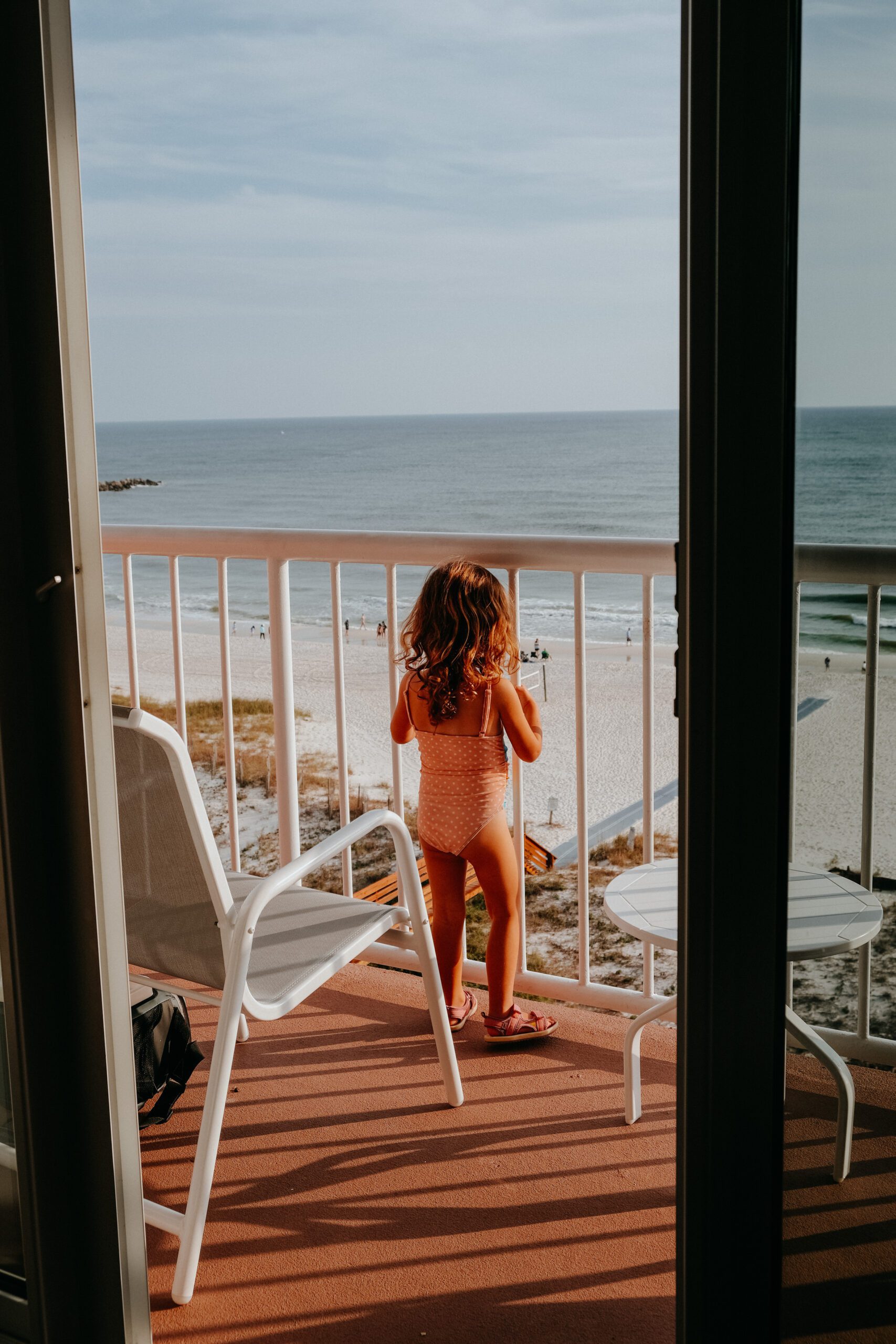To visit Mount Desert Island, Maine, is to visit Acadia National Park, and vice versa – the two are so inextricably linked that a visitor to the island has no concept of the park’s boundaries. The land on this side of the road belongs to the park; the land on that side does not. But the island’s peaks roll down into its valleys, the rivers flow into the sound; and whether or not Acadia is your main attraction, it’s going to be a part of your MDI experience.
Our Fall Break trip to the island was not my first; in college, I spent two Augusts as part of the summer crowd, vacationing with a family for whom this was an annual getaway. For years I’d dreamed of returning to this unique, cozy spot.
I’m an ambitious planner when it comes to travel; I seek exploration more than relaxation, and I’m never content staying in one spot with my days all looking the same. My two small children, though, tend to reign in my adventurous aspirations, and we’ve come to embrace a dual-purpose framework – establish a “base camp” of accommodations that’s comfortable and accessible but offers ample opportunity for exploration. I knew this island, and I knew the kind of trip it would give us. I knew it would be perfect.
Visiting Acadia National Park is more like an immersion experience. During our week-long stay, we never had days dedicated specifically to a park visit. Instead, we planned a morning hike before brunch; took the scenic route on our way home from town; sought an unseen vista when the kids needed a nap and a drive was our only hope. There is a massive amount of trails to hike and sites to explore, which makes MDI a great spot to re-visit – you’ll always find something new to discover. But whether you need a place to start or seek a highlights-only version of the scenery, Acadia’s Park Loop Road is a good place to begin.
Hulls Cove Visitor Center
Begin with a trip to the Hulls Cove Visitor Center, north of Bar Harbor off Highway 3; the 52 steps leading to the entrance can be considered your first “hike” of Acadia. You can grab maps, speak to Park Rangers, and visit the Gift Shop before beginning the Loop at its official entrance via Paradise Hill Road.




Sand Beach
Perhaps you’ve seen the stat circulating the web that boasts Maine has more coastline than California, and in some manner of speaking, this is true. Considering shoreline – which counts islands and indentations such as inlets, sounds, and bays – Maine claims 3,748 miles of “coast” compared to California’s 3,427. And of those spots where water meets land, Maine’s are varied in landscape. Postcards highlight Maine’s majestic, rocky coasts, which is one reason Sand Beach, an early stop on Park Loop Road, is such an attention-grabber.
You could spend hours at this spot, and when I was a 21-year-old college student desperately seeking summer sun, I once did. I remembered Sand Beach as an anomaly of Maine’s landscape – a quiet and serene respite. I would have thought that during the off-season it would be the same, but on this trip we quickly discovered the “off-season” seemed to have skipped Mount Desert Island this year. Between the annual leaf-peepers and loads of COVID-quarantine-stir-crazy folks, it was absolutely packed. Maybe this is actually the norm now – my last visit was in 2008. Regardless, make Sand Beach your first stop of the morning, no later than 10; the parking lot fills up fast. Take plenty of time to stroll through the surf, explore the tide pools, and ramble over the boulders.





Ocean Drive
The stretch of road that spans beyond the Sand Beach turnout is known as Ocean Drive; this section of the Loop hugs the coastline, hitting other points of interest such as Thunder Hole, Monument Cove, and Otter Cliff before the land bends north along Otter Cove. There’s a small, gravel pathway that runs between the road and the coast offering endless views of the Atlantic. After leaving Sand Beach, you’ll encounter several parking lots that give access to pedestrian views. Follow the pathway on foot from here to explore the overlooks and granite shoreline; pause at the viewpoint of your choice for a snack or lunch. (Our spot was just beyond the first parking lot, following a path through a cluster of trees.)
At Hunters Beach Cove, the road begins its climb north and away from the coast. Several of the park’s infamous carriage roads and stone bridges traverse the route as it weaves through the forest. There are forty-five miles of these rustic roads in the park, designed by John D. Rockefeller (one of the park’s founders) with the intent to preserve nature and offer a view of the park forbidden to cars.





Jordan Pond
The next most populous junction is Jordan Pond and its long-standing restaurant, the Jordan Pond House. The site has been serving its famous popovers since 1893; the current building has been standing since 1982. (The original one burned down in 1979.) If you can navigate the crowds and snag a table, popovers and afternoon tea are an iconic Acadia experience, but even without the snack, Jordan Pond is a must-see.
Because Acadia kept serving us heavy crowds, we opted for the early bird hike on the Jordan Pond Path. It’s a 3.3-mile ring around the lake’s shore with plenty of woodsy, lake views. One of the most iconic photo ops in all of Acadia is from the southern end of the lake, facing north towards the two rounded peaks of the Bubbles. I recommend following the path in a clockwise motion, beginning near the boat launch. The trail includes a lengthy raised, wooden footpath and sections of boulder scrambles, but overall, it’s an easy hike. The elevation stays low on this shore path, but there are several nearby trail options (some connected to the shore path) that offer a more elevated view.




Cadillac Mountain
Continuing north, along the Park Loop Road’s western side, you’ll pass Eagle Lake to your left as the loop nears its crest and starting point. (The road is two-way along this stretch.) Before reaching that initial point of entrance at Paradise Hill Road, you’ll pass the turn-off for Cadillac Mountain, and you can’t leave Acadia without a stop.
Sometimes the most tourist-heavy destinations are that way for a reason. As the highest point on the east coast, Cadillac Mountain offers an unparalleled vista of the island and coast. It’s easy to reach its peak – a winding road climbs straight up to a parking lot. (You do need timed reservations to make it on that access road.) Once at the top, you can wander at your own pace. There are plenty of spots to enjoy a 360 view without swarms of people. If you’re extra committed, you can score one of the sunrise reservations; Cadillac Mountain gets the first peek of sunrise in the whole United States for several months of the year.
You can catch all these sites with a day-long drive of the loop, but spread it out over the course of your trip and soak in the scenery; between the weather and the season, you’ll never get the same view twice.


